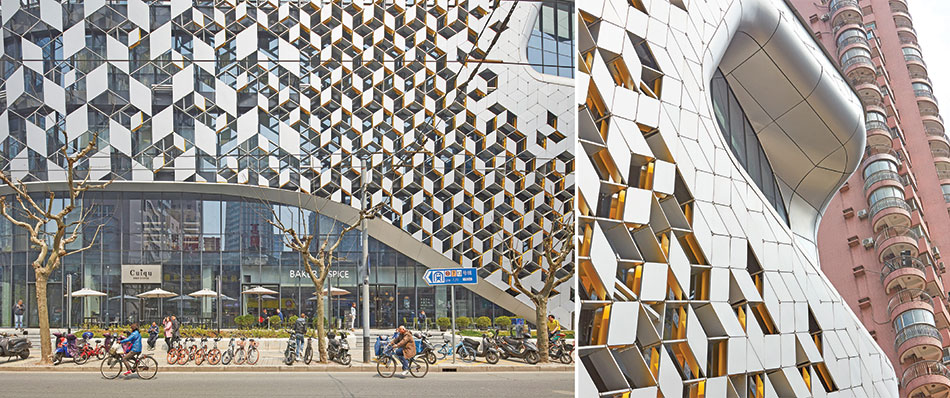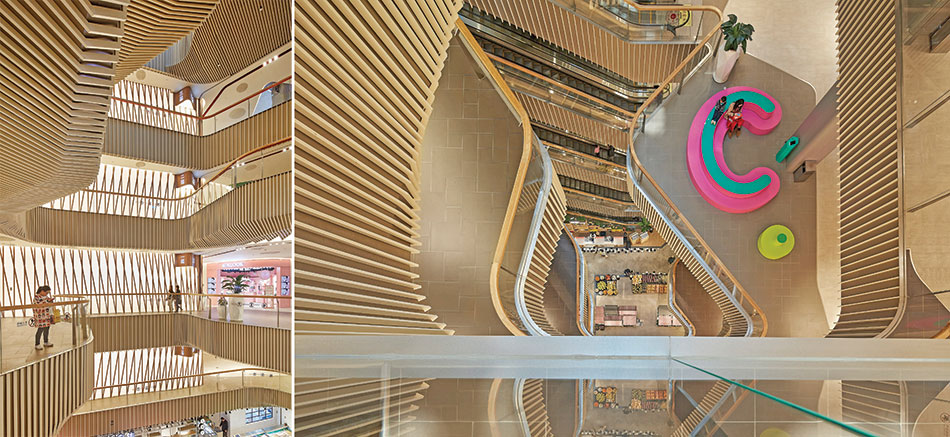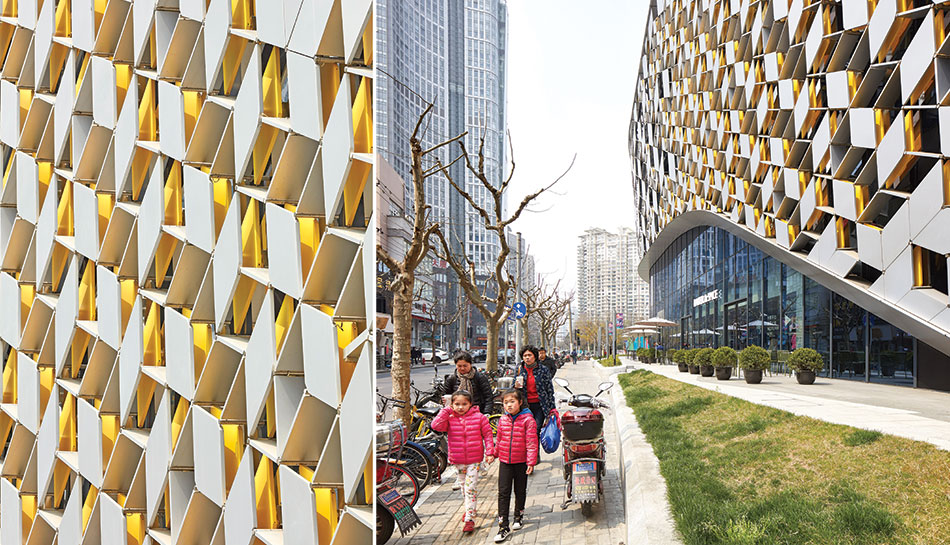Lane 189, located in the Putuo district in central Shanghai - opposite Chang Shou Park and close to the Jade Buddha Temple combines retail, restaurant and office spaces in an organisation that rearranges the typical mall into a vertical city centre. The design incorporates elements of 'old Shanghai' through geometry, pattern and materialization, and combines these with a contemporary urban experience.

Fact File
Project name: Lane 189
Location: Shanghai
Programme: Retail, F&B, office, parking
Site Dimensions: ~90 x 65 m
Building Site Area = 6157 m2
Building Height: 34.9 m
Number of Floors (Below Grade): 4
Number of Floors (Above Grade):7
Client: CITIC Capital
Local Executive Architect: TJAD (Local Design Institute) / UNStudio
Construction Management: CITIC Capital
Consultants
Façade: Inhabit
Lighting: Ag LICHT, LEOX Design
Landscape: TJAD
Completion: December 2016
Photos: Hufton+Crow, Eric Jap
Material Palette
Flooring: Tiles
Glazing: Internal
Ceilings: Knauf gypsum board
Wall finishes: Aluminum wall cladding from JYMQ
Lighting: Jojo, Osram, Opple, Beghelli
Lighting control: e:cue
Bathroom appliances:TOTO
Sustainable feature: low-e coated triple glazing
Contractors
Façade: Boji
ID: Beijing Honggao
Façade
Screened facade areas: 2054 sqm upper facade, 4021sqm lower facade, total: 6075 sqm.
Exterior Materials
Substructure: aluminum, steel, stainless steel
Superstructure: steel reinforced concrete
Envelope
Screened Facade (southwest / northwest facade): Pvdf-coated aluminum panels; stainless steel pin connector elements
Glass Façade: Triple layer curtain wall glazing system (3x 6 mm) Back Facade (northeast / southeast facade) Painted render
Programmed Facade
The facade is designed to support the overall design concept of a programmed facade and to create depth for the building envelope. The use of multi-layered components enables a variety of views towards the surroundings, whilst providing functional transparency in specifically located areas. Based on a hexagonal grid, the facade components follow the articulated geometry of the building and provide constantly changing perspectives.
A gradient transition from bigger to smaller facade components regulates the exposure of the inside to the outside and enhances the main entrance of the building. The facade therefore becomes an integrated active layer that can be programmed as display windows, vista points or balconies.

On the lower façade, a hexagonal grid consists of diamond shaped panels that are tied between pins forming a tensioned cladding system. Here, the arrangement of the components can change across the facade from single layer to triple layer, up to a depth of 400mm. Constructed from different materials and lit by RGB LEDs these panels create different visual effects: transparent or opaque, colourful or monochrome, reflective or matt.
On the upper facade the components are made up of a single layer, of one size and are solid or perforated across the facade and towards the main entrance central to the building - the components change in scale and change from triple scale, from triple layer to single layer. Solid and open single layer panels are used on the rear of the building.
Large double-height facade openings present the interior programme to the outside world. These 'urban eyes' simultaneously create large display platforms for products whilst providing balconies with views to the surroundingsInterior
The interior of Lane 189 derives its character from a central void which cuts through the volume from base to top and is punctuated by a series of rounded plateaus. When seen from below the rounded plateaus resemble a cohesive layered organic structure, however when looking down from above the programmes of the plateaus are revealed. These smaller pockets, positioned in a rotational manner, are visually connected to the urban eyes of the facade.

The central void further organises vertical circulation and orientation, creates views across the different levels and facilitates a clear view column from the second basement level up to the skylight art installation. The multi-height spaces of the rounded plateaus accommodate individually themed programmes. The lower plateaus of the basement levels house a market plaza and the food court, while the first and second level plateaus hold an art street and grand balcony.















